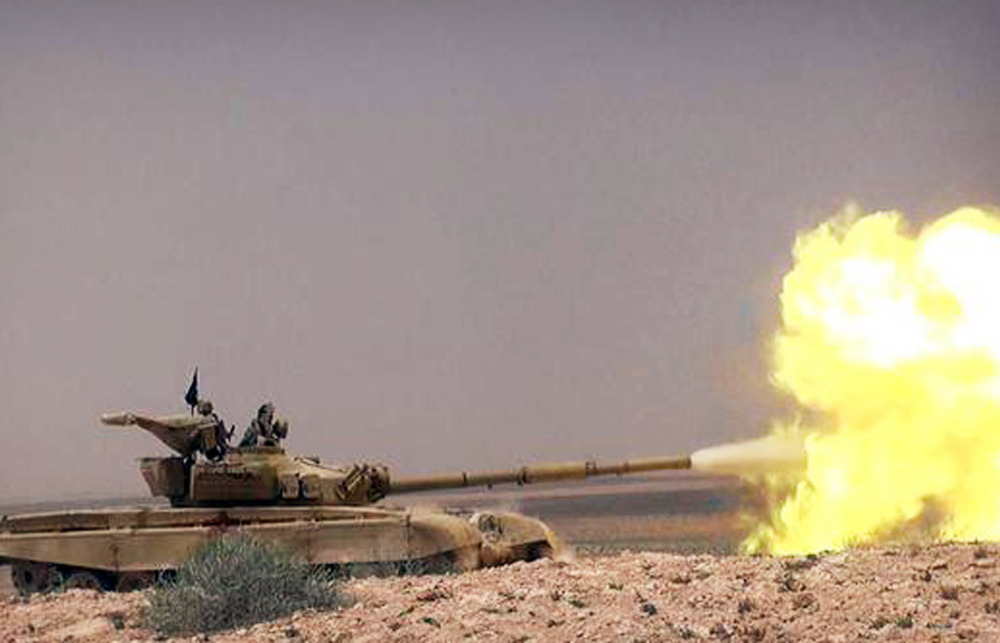BAGHDAD — Islamic State militants tightened their hold Thursday on the Syrian city of Palmyra, leaving decapitated bodies of suspected opponents in the streets as announcements from mosque loudspeakers urged residents to turn in government soldiers.
The militants’ capture of Palmyra has raised concerns about the fate of the ancient ruins in the city, a UNESCO World Heritage site about 130 miles northeast of the Syrian capital. Activists also have warned that a large civilian population remains in Palmyra, despite government claims that its fighters secured the residents’ exit before retreating.
The militants’ advance came less than a week after the Islamic State seized the Iraqi city of Ramadi, undermining U.S. assertions that the group is largely on the defensive after months of airstrikes by an international coalition. The group continued to gain ground east of Ramadi on Thursday.
Palmyra’s fall also marks the first time that Islamic State forces have seized a major population center directly from the Syrian government. Previous advances came against rebel groups.
MANY CIVILIANS STILL IN PALMYRA
In a statement released on affiliated social media sites Thursday, the Islamic State said it had taken complete control of the city, including its notorious prison and military airport. Pro-government forces “collapsed and fled,” it said.
A day after Palmyra fell, mosques announced Thursday morning that families hiding regime soldiers should turn them over to Islamic State authorities, activists said.
As militants searched door to door, grisly images showing beheaded bodies on the city’s streets circulated on social media. The dead were said to be members of the Shaitat tribe. The tribe paid a heavy price for rising up against the Islamic State last year; as many as 700 members were massacred in a failed revolt.
Activists estimate that more than 100,000 civilians may still be in the city, whose population had swelled because of an influx of internally displaced people from other parts of Syria.
The Islamic State’s latest gains give the al-Qaida offshoot, which is also known as ISIS or ISIL, control of a key route to the capital, Damascus, while cutting supply lines to beleaguered Syrian forces farther east in Deir al-Zour province.
NO KNOWN DAMAGE TO HISTORIC SITE
The advances also consolidate the group’s control along the border with Iraq, where its fighters on Thursday seized the only crossing point they did not control after government forces pulled out of al-Tanf, according to the Britain-based Syrian Observatory for Human Rights.
There were no immediate reports of damage to Palmyra’s famed archaeological site, including the remains of temples and artifacts that trace the area’s rich legacy as a commercial and political crossroads dating back more than 2,000 years.
But the Islamic State, ostensibly acting in the name of religious purity, has destroyed pre-Islamic treasures in northern Iraq that it deemed blasphemous, including other UNESCO heritage sites such as Hatra and Nimrud.
Palmyra’s loss is expected to increase pressure on President Bashar Assad, whose forces have been losing ground to other armed groups fighting to overthrow him. Syrian state television carried little coverage of the fall of Palmyra. The official Syrian Arab News Agency accused Western nations of “standing still” and doing nothing to protect the city.
Send questions/comments to the editors.




Success. Please wait for the page to reload. If the page does not reload within 5 seconds, please refresh the page.
Enter your email and password to access comments.
Hi, to comment on stories you must . This profile is in addition to your subscription and website login.
Already have a commenting profile? .
Invalid username/password.
Please check your email to confirm and complete your registration.
Only subscribers are eligible to post comments. Please subscribe or login first for digital access. Here’s why.
Use the form below to reset your password. When you've submitted your account email, we will send an email with a reset code.